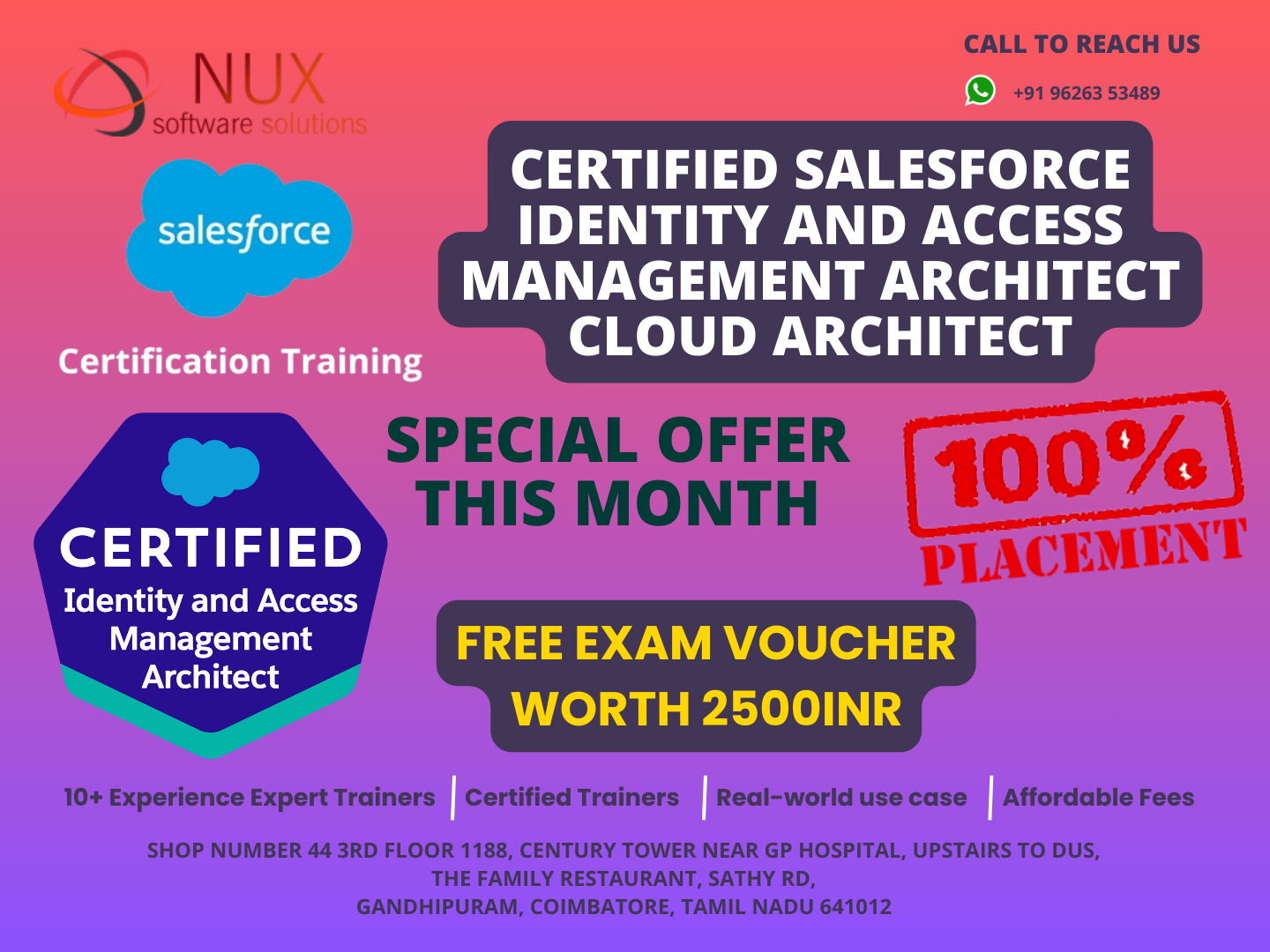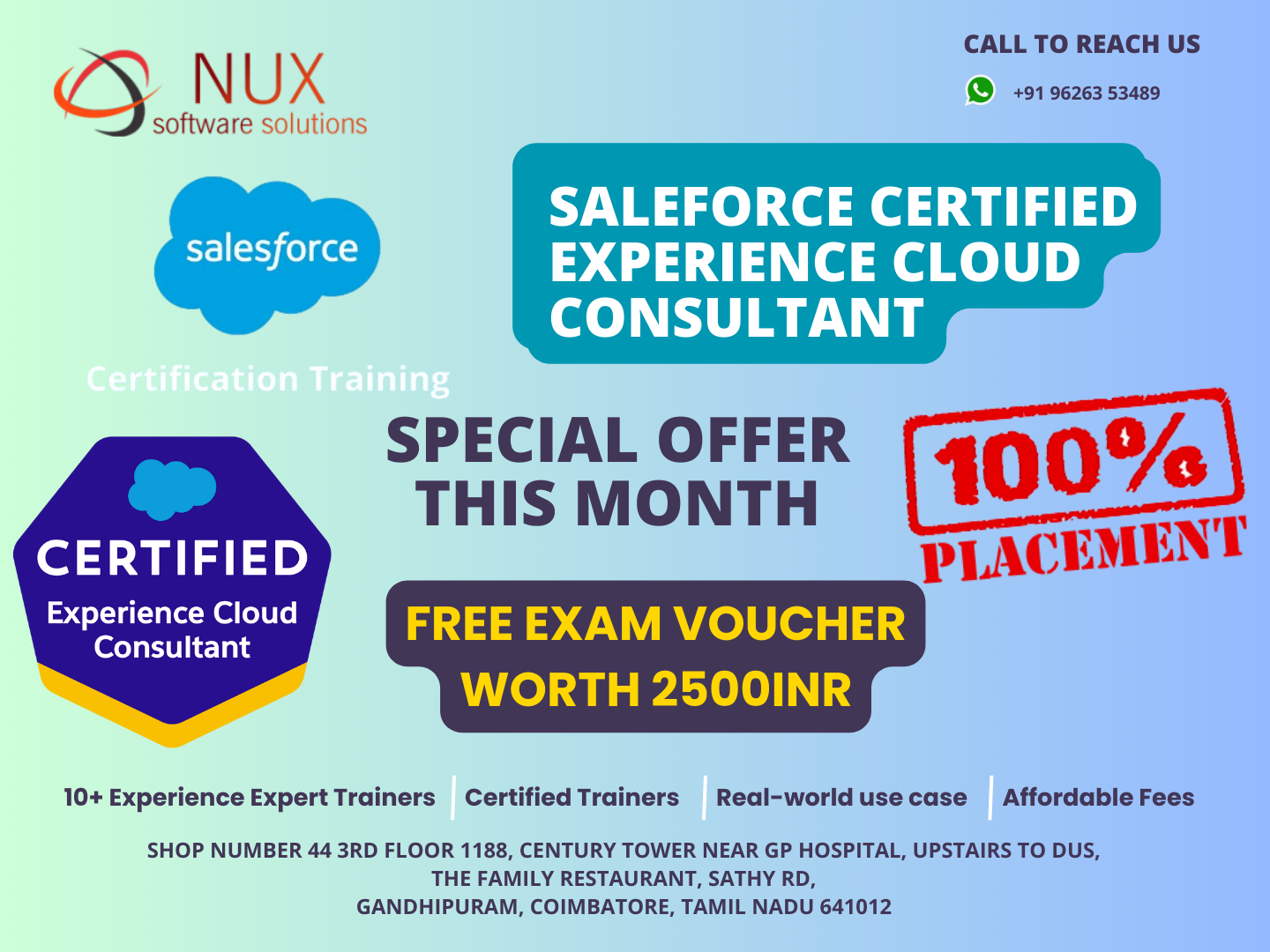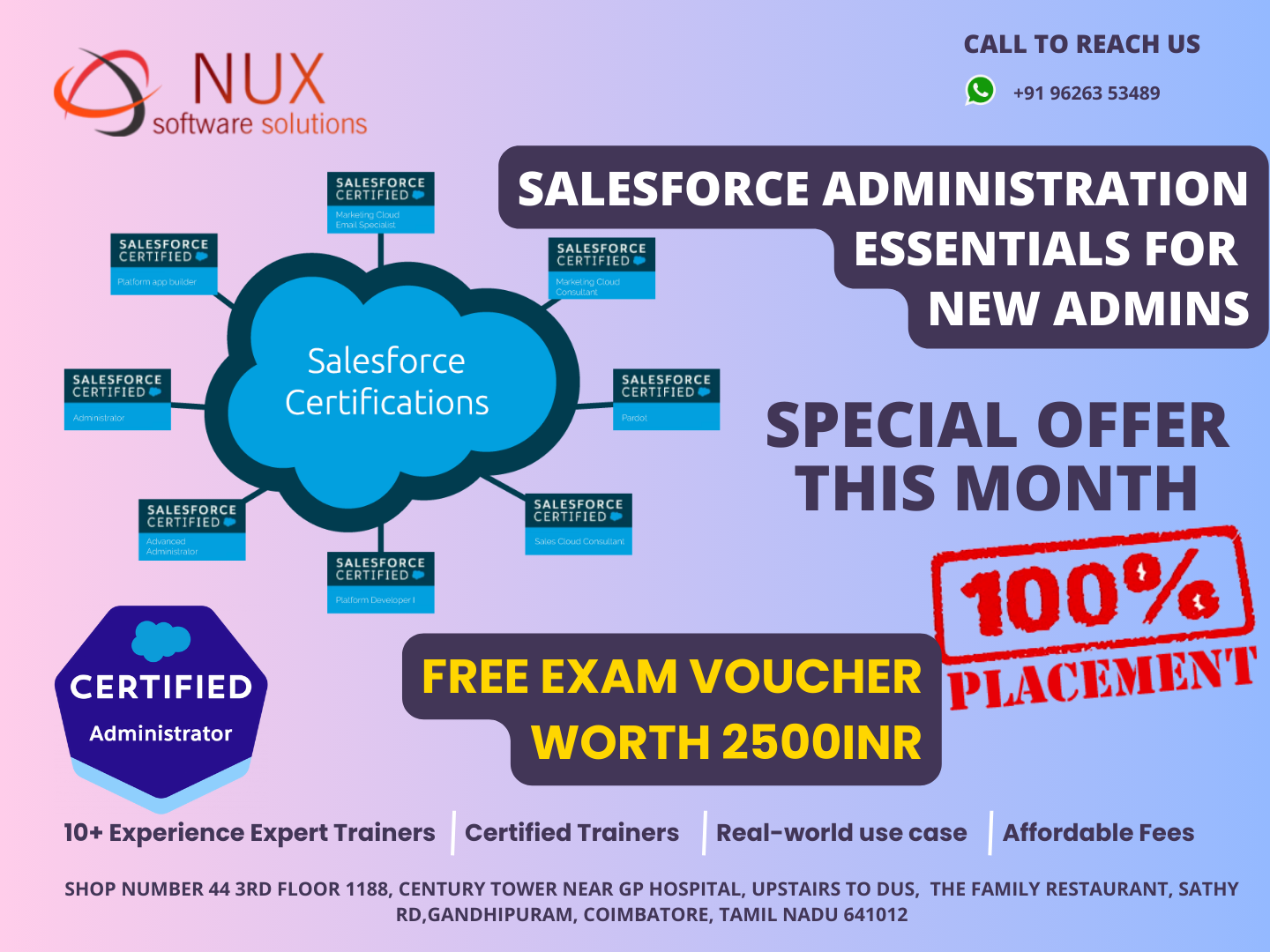Certified Salesforce Identity and Access Management cloud Architect


Get the best Certified Salesforce Identity and Access Management Architect training at NuxSoftware Training & Certification Solutions in Coimbatore. Benefit from advanced programs, expert trainers, and flexible learning. Our labs are accessible 24/7, offering hands-on experience. Elevate your career with guaranteed growth through cost-effective training and a supportive environment.
The Certified Salesforce Identity and Access Management Architect is for experienced Salesforce professionals eager to maximize additional features and capabilities for their companies. If you’re committed to enhancing Salesforce usage, this certification showcases your expertise in optimizing functionalities for organizational success.
Course Syllabus
Certified Salesforce Identity and Access Management Architect Syllabus
Identity Management Concepts -17%
- Describe common authentication patterns and understand the differences between each one.
- Describe the building blocks that are part of an identity solution (authentication, authorization, & accountability) and how you enable those building blocks using Salesforce features.
- Describe how trust is established between two systems.
- Given a scenario, recommend the appropriate method for provisioning users in Salesforce.
- Given a scenario, troubleshoot common points of failure that may be encountered in a single sign-on solution (SAML, OAuth, etc.)
Accepting Third-Party Identity in Salesforce - 21%
- Given a use case, describe when Salesforce is used as a Service Provider.
- Given a scenario, recommend the most appropriate way to provision users from identity stores in B2E and B2C scenarios.
- Given a scenario, recommend the appropriate authentication mechanism when Salesforce needs to accept 3rd Party Identity (Enterprise Directory, Social, Community, etc.).
- Given a scenario, identify the ways that users can be provisioned in Salesforce to enable SSO and apply access rights.
- Given a scenario, identify the auditing and monitoring approaches available on the platform, and describe the tools that are available to diagnose IdP issues.
Salesforce as an Identity Provider - 17%
- Given a scenario, identify the most appropriate OAuth flow (Web based, JWT, User agent, Device auth flow).
- Given a scenario, recommend appropriate Scope and Configuration of the connected App for Authorization.
- Describe the various implementation concepts of OAuth (scopes, secrets, tokens, refresh tokens, token expiration, token revocation, etc.).
- Given a scenario, recommend the Salesforce technologies that should be used to provide identity to the 3rd party system. (Canvas, Connected Apps, App Launcher, etc.).
Access Management Best Practices - 15%
- Given a set of requirements, determine the most appropriate methods of multi-factor authentication to use, and the right type of session they should yield.
- Given a scenario, how should you best assign roles, profiles, and permission sets to a user during the SSO process, how would you keep these assignments up to date.
- Given a scenario, describe what tools you can apply to audit and verify the activity/user during and after login.
- Given a scenario, identify the configuration settings for a Connected app.
Salesforce Identity - 12%
- Given a set of requirements, identify the role Identity Connect product plays in a Salesforce Identity implementation.
- Given a scenario identify if Salesforce Customer 360 Identity fits into a fully developed Customer 360 solution.
- Give a set of requirements, recommend the most appropriate Salesforce license type(s).
Community (Partner and Customer) -18%
- Describe the capabilities for customizing the user experience for Experience Cloud (Branding options, authentication options, identity verification self-registration, communications, password reset etc.).
- Given a set of requirements, determine the best way to support external identity providers in communities and leverage the right user/contact model to support community user experience.
- Given a requirement, understand the advantages and limitations of External Identity solutions and associated licenses.
- Given a scenario, determine when to use embedded login.


